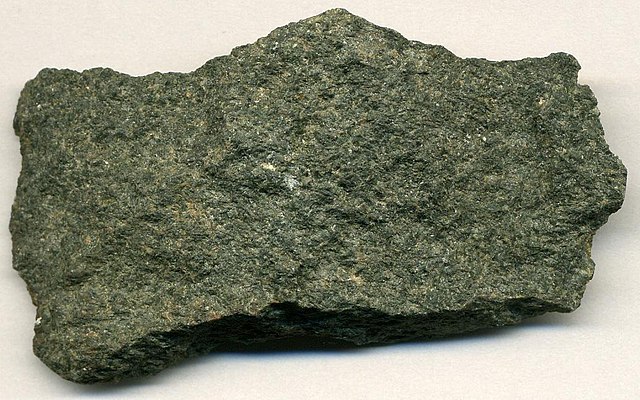zone of variably metamorphosed (ultra)mafic volcanic sequences with associated sedimentary rocks occurring in Archaean and Proterozoic cratons between granite and gneiss bodies, typically dozens to thousands of kilometres long From Wikipedia, the free encyclopedia
Greenstone belts are large regions of very ancient metamorphosed volcanic rocks. The name comes from the green colour of the minerals in the rocks. Chlorite, actinolite and other green amphiboles are the typical green minerals.

Greenstone belts were originally formed of igneous rocks, such as basalt. The belts formed at ancient oceanic spreading centers and in volcanic island arcs. They may be several thousand kilometres long. Later, they were metamophosed, with minor sedimentary rocks in-between the volcanic formations.
Those greenstone belts which formed in ancient oceans are now found on land in Archaean and Proterozoic cratons between granite and gneiss bodies. The rocks are mafic, meaning they are high in magnesium and silica.
Seamless Wikipedia browsing. On steroids.
Every time you click a link to Wikipedia, Wiktionary or Wikiquote in your browser's search results, it will show the modern Wikiwand interface.
Wikiwand extension is a five stars, simple, with minimum permission required to keep your browsing private, safe and transparent.